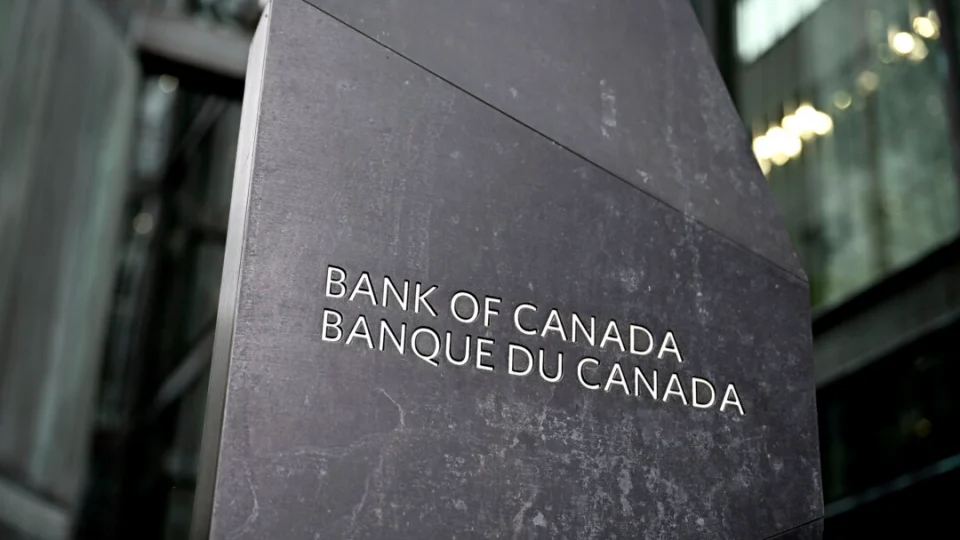
Bank of Canada Lowers Key Interest Rate to 4.25 Percent
OTTAWA—The Bank of Canada reduced its key interest rate for the third time in 2024, bringing it down from 4.5 percent to 4.25 percent.
“Headline and core inflation have continued to ease as expected,” Bank of Canada governor Tiff Macklem said in his opening remarks announcing the rate change on Sept. 4.
“As inflation gets closer to target, we want to see economic growth pick up to absorb the slack in the economy so inflation returns sustainably to the 2 percent target.”
Inflation slowed further to 2.5 percent in July on a year-over-year basis, with “overall weakness” in Canada’s economy continuing to pull prices down, said Macklem. Canada’s inflation rate previously sat at 2.7 percent in June, 2.9 percent in May, and 3.4 percent in December 2023.
Macklem added that further reductions in the interest rate are “reasonable to expect” if inflation continues to slow, but that the central bank will “take our monetary policy decisions one at a time.”
The Canadian economy grew by an annualized rate of 2.1 percent in the second quarter of 2024, buoyed by increased government spending and business investment, Macklem said. The economy grew by 1.8 percent in the first quarter of the year, which he said suggests a “healthy rebound from the near-zero growth we had in the second half of 2023.”
The governor said unemployment has risen over the last year to 6.4 percent in June and July, with the increase concentrated in youth and newcomers to Canada, who are finding it more difficult to obtain a job. Business layoffs have remained “moderate” but hiring has been weak.
While Canada’s labour market continues to be slow, Macklem said wage growth remains “elevated relative to productivity.” The bank’s senior deputy governor, Carolyn Rogers, had said in March that the country’s low productivity had become “an emergency“ and there is a ”pressing need” to increase it.
Shelter Prices Contributing to Higher Inflation
The central bank first began raising interest rates in March 2022, from 0.25 percent to 0.5 percent, in response to high inflation caused by the COVID-19 pandemic, disrupted supply chains, elevated energy prices, and increased government stimulus.
Inflation rose to its peak of 8.1 percent in June 2022, from 2.2 percent in March 2021, when the key interest rate was 0.25 percent. The bank responded with another rate increase, hiking the key rate to 1.5 percent in June 2022. By July 2023, the rate had risen to its peak of 5 percent.
In June 2024, the bank reduced the key rate to 4.75 percent, lowering it for the first time since the start of the rake hikes in March 2022. The bank said “monetary policy no longer needs to be as restrictive” because of previous efforts in restoring price stability.
Macklem told reporters on Sept. 4 that while there is currently “little evidence of broad-based price pressures,” shelter price inflation “is still too high” in Canada. He said it continues to be the largest contributing factor to overall inflation in Canada, “despite some early signs of easing.”
As previously outlined in the bank’s July forecast, inflation is anticipated to decline further in the coming months, Macklem said. He added, however, that it may increase in late 2024 as “base-year effects unwind” and there is a risk that “upward forces on inflation could be stronger than expected.”
The governor also warned that with inflation approaching the central bank’s target of 2 percent, it needs to increasingly guard against the risk of a weaker economy. “We care as much about inflation being below the target as we do above,” Macklem said.
Across the global economy, the United States saw stronger-than-expected growth led by consumption although the labour market has slowed, Europe saw increased growth in tourism and other services alongside weaker manufacturing, and China had “weak domestic demand” that weighed on economic growth, the bank’s Sept. 4 press release said.